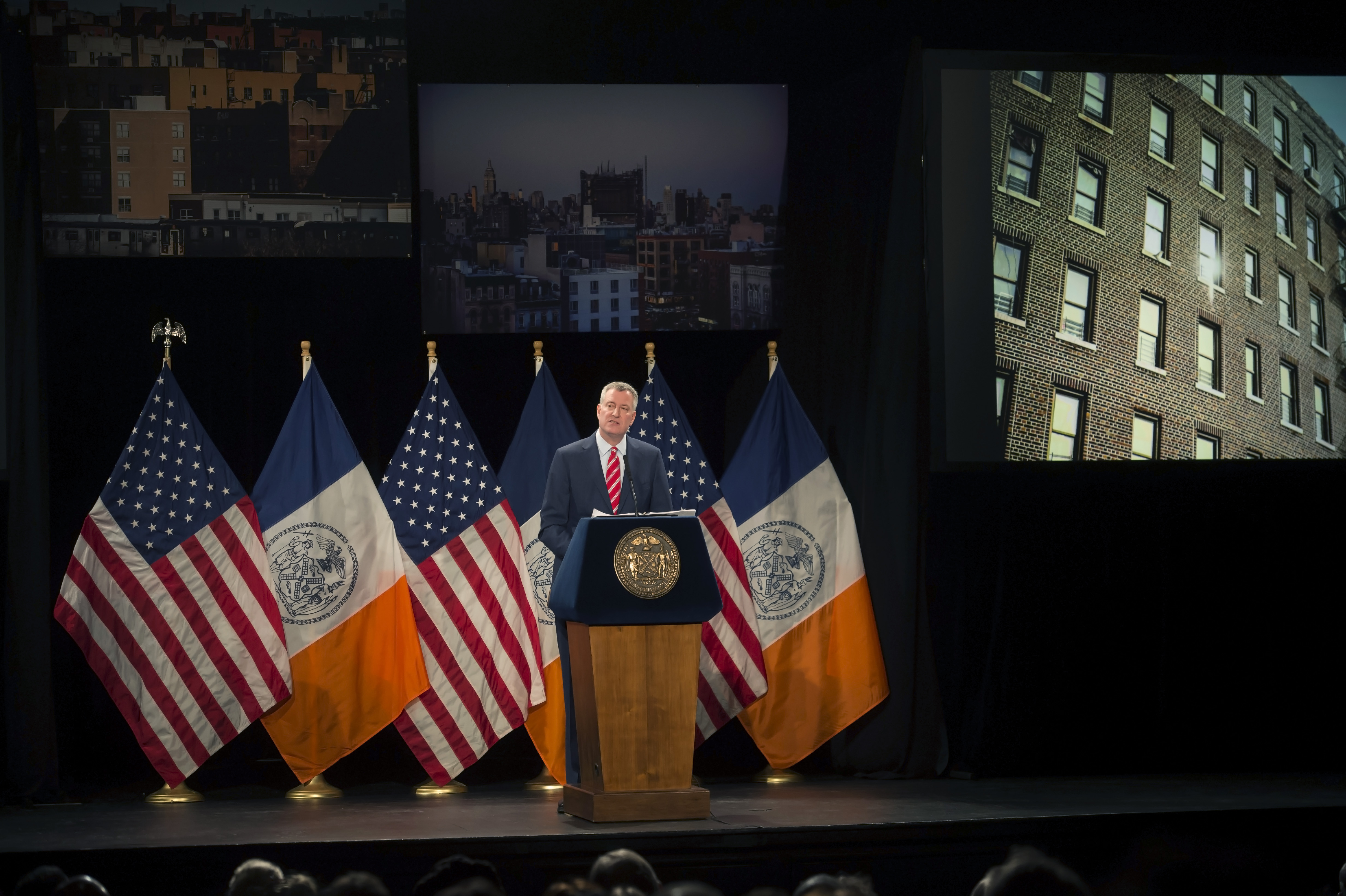by: Rick Bell FAIA Executive Director AIA New York
On 02.03.15, Mayor Bill de Blasio outlined his take on the State of New York City after his first year in office. The program started with a timeline of achievements, such as the May 2014 announcement of the goal of 200,000 affordable housing units, and the pledge of a $210.5 million effort to reduce crime citywide, including at New York City Housing Authority sites. Along with housing, the Mayor noted that his primary goal was education, saying that there were now 53,000 kids in pre-Kindergarten classes as of this past September. He also reiterated his September pledge of 80% carbon reduction by the year 2050. The overview concluded with the refrain: “Together we’ve accomplished a lot, and we’re just beginning.”
A major theme of the speech, as in the campaign, was how to create and maintain “a city where everyone has a shot at [getting into] the middle class.” After an anecdote about his grandmother’s resolve and entrepreneurial spirit, the mayor intoned: “If we do not act, and act boldly, New York risks taking on the characteristics of a gated community. We cannot let that happen. We will not let that happen.”
Of the achievements most relevant to architects and others in the design professions and construction industry were:
- Construction starts on more than 1,000 homes post-Sandy
- Started to create half a dozen new community clinics
- New schools started since “every child in every neighborhood deserves a quality education”
Housing was, however, the preeminent theme and subject of the speech. De Blasio made three key points about how new affordable housing is being created. “First,” he said, “we are writing new rules for how we are building this city, rules that mandate affordable housing.” There was a long presentation regarding inclusionary zoning.
“Second, keep people in the homes they love,” by avoiding displacement and gentrification.
“And third, by adding density to appropriate parts of our city, not building towering skyscrapers where they don’t belong, but by recognizing that there are some places in the city not zoned for housing, but which could be,” he concluded.
The mayor reiterated that, “We are committed to creating 80,000 new units by 2024, plus 120,000 preserved units,” and added, “This means building at twice the annual rate of the last 25 years.” Putting the numbers into context, Mayor de Blasio declared: “Our people need that housing now. Two hundred thousand units is half-a-million people, more than those who live within the city limits of Miami.” He quipped, “Take that, Miami,” before noting that “so far, we have created 17,300 units – some 1,300 more units than expected by this time, and that means 1,300 more families have housing.” The relation between housing starts and physical change in neighborhoods to improving the lives of New Yorkers was made palpable by crafted codas: “This is how we win this, family by family, unit by unit.” The mayor added: “We’re going to be sure that everyone has a place to live, and also create 160,000 market-rate units, creating hundreds of thousands of construction jobs and 20,000 permanent jobs.”
There was mention of specific neighborhoods undergoing transformation, from the South Bronx waterfront to the Rockaways. Mayor de Blasio also spoke of the potential for housing at Sunnyside Yards in Queens, where 200 acres for affordable housing could be created by covering the tracks. “Parks, schools, retail and job opportunities go along with good access to public transportation,” he noted.
Near the conclusion of his 90-plus-minute speech, Mayor de Blasio recalled the goal stated a generation ago by Mayor Ed Koch: “We’re creating more than apartments, we’re recreating neighborhoods.” De Blasio commented: “We know that Koch’s goal was realistic, and had a transcendent impact.” His conclusion reached a rhetorical crescendo by building on the past to reaffirm the future: “Our Administration is about action, and we’ll continue to lead a city that reflects all that is great about the human experience. The energy of this city makes many things possible. Your energy invigorates us, your compassion inspires us, and your resolve compels us to move forward.”
The speech can be read in its entirety here.








